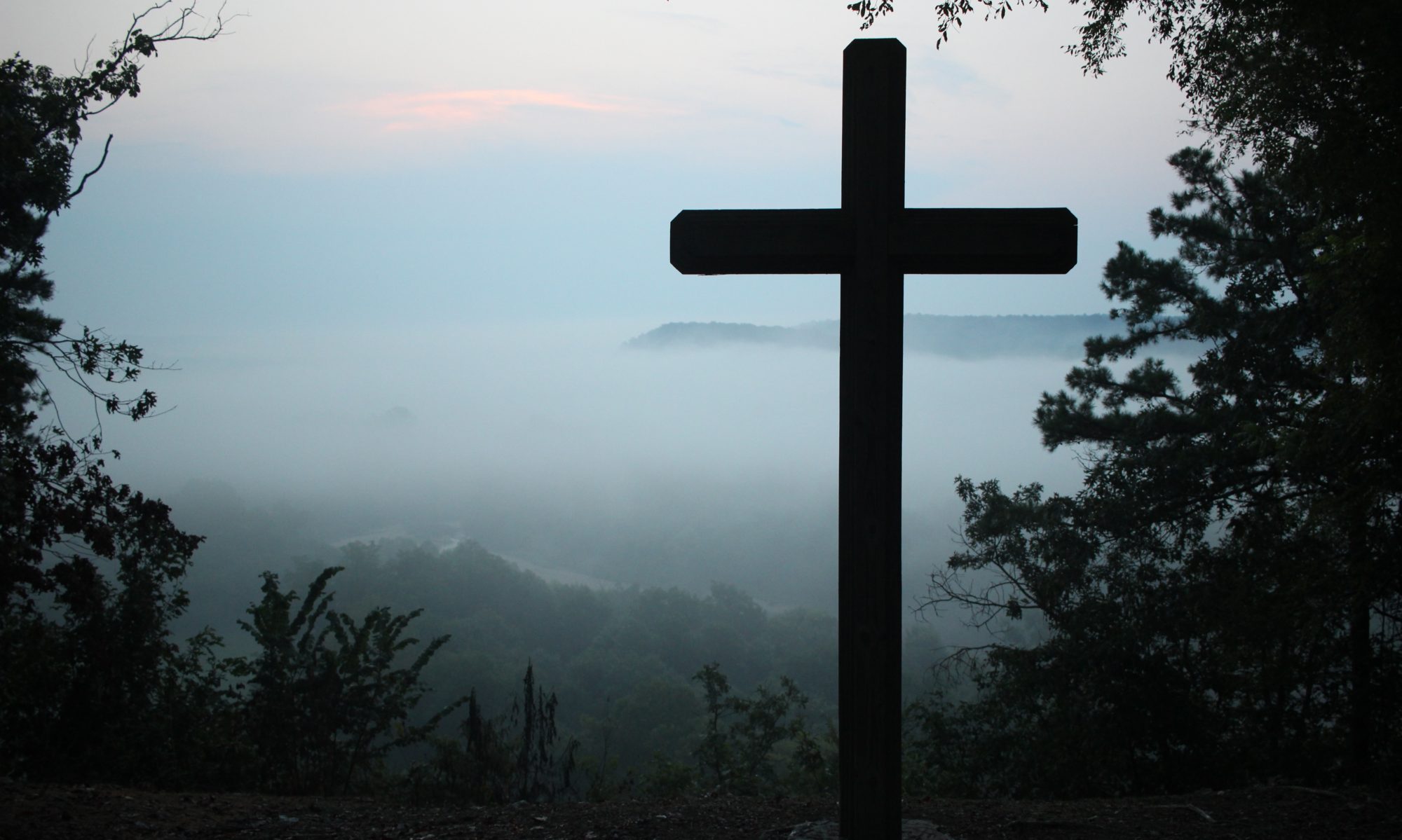One covenant is from Mount Sinai and bears children who are to be slaves: This is Hagar. Now Hagar stands for Mount Sinai in Arabia and corresponds to the present city of Jerusalem, because she is in slavery with her children.
Summary: The writer of Hebrews reminds us that faith is “assurance about what we do not see.” Sometimes we need to be reminded of what it is that we don’t see. Paul is here to help us!
Looking at a map, the northern extreme of the Red Sea ends with two long gulfs that look like someone is making a “peace sign” with their fingers. The one on the left is the Gulf of Suez, and the one on the right is the Gulf of Aqaba. For biblical purposes, both are considered part of the Red Sea.
Most mapmakers seem to place Mount Sinai between the two fingers very close to where they meet. Some people believe that the actual location of Mt. Sinai is east of the Gulf of Aqaba (the right finger). Part of this disagreement stems from other disagreements about where the Israelites might have crossed the Red Sea.
You see, nobody alive today knows where the Exodus route is. What we do know is that according to the Genesis story, the Israelites had already crossed the Red Sea when they came to Mt. Sinai. We simply don’t know where that was.
When Paul says, “One covenant is from Mount Sinai …” he refers to the place where Moses received the Ten Commandments from God (Exodus 20:1-17). Then he says, “Mount Sinai in Arabia … corresponds to the present city of Jerusalem.”
Physically, Jerusalem is over two hundred miles to the north of either possible location for Mt. Sinai. When Paul says Mt. Sinai “corresponds” to Jerusalem, he is not making a physical connection. Instead, he is making a figurative connection.
What is this connection?
We know that Hagar was a slave because the Bible tells us (Genesis 16:1). Hagar was a slave, and later, when Israel was in Egypt, they, too, were slaves. So, there is one connection.
But when Israel left Egypt, they were free, right?
Right?
Throughout Scripture, there is a duality between the seen and the unseen (2 Corinthians 4:18). According to what was “seen,” Israel was free. Unfortunately for them, in the world of the unseen, they were still slaves to self-interest.
When God gave Moses the Law at Mt. Sinai, it was like shining a light in a dark room. What had been invisible was now visible. The sin that couldn’t be seen before could now be seen. Because the people of Israel could not free themselves from sin, they were, in effect, still slaves. This slavery persisted and was memorialized in Jerusalem when the Temple was built there.
So there you have it: Paul’s connection between Hagar, Mt. Sinai, and Jerusalem. Hagar’s enslavement reflects the unseen slavery of mankind to self-interest. The law given at Mt. Sinai and kept in Jerusalem didn’t cause this invisible slavery, it illuminated it (Romans 7:7). The connection is not one that is seen, but unseen.
Application: Thank Jesus for freeing us from slavery to sin!
Food for Thought: How does Paul’s statement relate to modern-day Israel?

I particularly like your statement about the law not causing this slavery to sin, but illuminating it.
I think Paul’s statement here relates to modern day Israel in several ways. Currently, they are in the promised land in unbelief. God has been faithful but they have not. While there has always been a faithful remnant and that is true today, to be truly free they need to receive Jesus as their Messiah and Lord. They are in at least part of their promised land and free politically, but will not be completely free until they turn to the grace that is in Christ Jesus (John 8: 31 – 36). Someday (at the end of the tribulation) they will respond in masse to their Savior, repent, and be saved as an entire nation (Zechariah 12: 10 – 13: 1; Hosea 5: 15 – 6: 3; Romans 11: 25 – 27).
Thank you, Rich!
Excellent analysis! I especially appreciate your focus on the need to respond to Jesus. There is an obvious parallel every Passover when we celebrate the Hebrews being sheltered from death by the blood of the lamb. The “unseen” parallel is our need to be sheltered from spiritual death by the blood of Jesus.
I think the thought that comes to mind is that anyone who has not placed their faith in Christ is still a slave to sin. If I can extrapolate anything from the old covenant it’s that mankind is incapable of freeing itself from the bondage of sin.
In a lot of ways Hagar represents mankinds attempt to take what is Gods and make it their own. The result of that does not free us from sin but rather strengthens its hold on us.
I also think that the present state of modern day Israel is represetative of a life that waivers back and forth in dedication to God, but hasn’t submitted to His Will. Like a person who does the same, they are weighed down by the consequences of their actions. And I dont say that with any kind of judgment, as I had lived the same life. Freedom from sin means freedom to be washed free from the past and be reborn. In that rebirth we then are able to turn from sin in the present. Not because we are “better,” but because Christ lives in us, and the Holy Spirit is with us. That is a tremendous gift from God.
Nicely said, Chris!
Thank you! I especially like your point about mankind’s attempt to take what is God’s and make it their own. True!